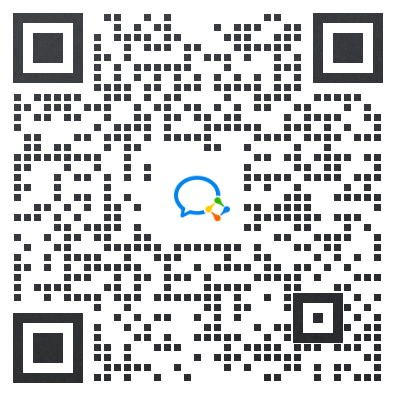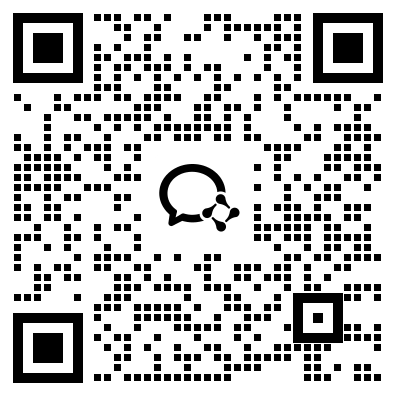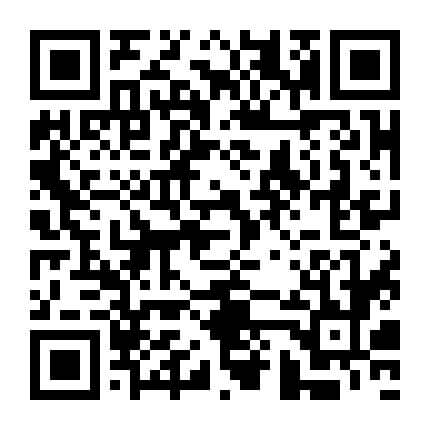考研201英语(一)在线题库每日一练(一百九十一)
摘要:以下是希赛网给大家分享考研201英语(一)在线题库每日一练,希望通过刷题可以帮助大家巩固重要知识点,对知识点查漏补缺,祝愿大家能顺利通过考试!
本文提供考研201英语(一)在线题库每日一练,以下为具体内容
1、In his book The Tipping Point, Malcolm Gladwell argues that “social epidemics” are driven in large part by the actions of a tiny minority of special individuals, often called influentials, who are unusually informed, persuasive, or well connected. The idea is intuitively compelling, but it doesn't explain how ideas actually spread.The supposed importance of influentials derives from a plausible-sounding but largely untested theory called the “two-step flow of communication”: Information flows from the media to the influentials and from them to everyone else. Marketers have embraced the two-step flow because it suggests that if they can just find and influence the influentials, those selected people will do most of the work for them. The theory also seems to explain the sudden and unexpected popularity of certain looks, brands, or neighborhoods. In many such cases, a cursory search for causes finds that some small group of people was wearing, promoting, or developing whatever it is before anyone else paid attention. Anecdotal evidence of this kind fits nicely with the idea that only certain special people can drive trends. In their recent work, however, some researchers have come up with the finding that influentials have far less impact on social epidemics than is generally supposed. In fact, they don't seem to be required at all.The researchers' argument stems from a simple observation about social influence: with the exception of a few celebrities like Oprah Winfrey—whose outsize presence is primarily a function of media, not interpersonal, influence—even the most influential members of a population simply don't interact with that many others. Yet it is precisely these non-celebrity influentials who, according to the two-step-flow theory, are supposed to drive social epidemics, by influencing their friends and colleagues directly. For a social epidemic to occur, however, each person so affected, must then influence his or her own acquaintances, who must in turn influence theirs, and so on; and just how many others pay attention to each of these people has little to do with the initial influential. If people in the network just two degrees removed from the initial influential prove resistant, for example, the cascade of change won't propagate very far or affect many people.Building on the basic truth about interpersonal influence, the researchers studied the dynamics of social influence by conducting thousands of computer simulations of populations, manipulating a number of variables relating to people's ability to influence others and their tendency to be influenced. They found that the principal requirement for what is called “global cascades” — the widespread propagation of influence through networks—is the presence not of a few influentials but, rather, of a critical mass of easily influenced people. 1.By citing the book The Tipping Point, the author intends to( ).2.The author suggests that the "two-step-flow theory" ( ). 3.What the researchers have observed recently shows that ( ). 4.The underlined phrase “these people” in paragraph 4 refers to the ones who ( ). 5.What is the essential element in the dynamics of social influence?
问题1
A、analyze the consequences of social epidemics
B、discuss influentials' function in spreading ideas
C、exemplify people's intuitive response to social epidemics
D、describe the essential characteristics of influentials
问题2
A、serves as a solution to marketing problems
B、has helped explain certain prevalent trends
C、has won support from influentials
D、requires solid evidence for its validity
问题3
A、the power of influence goes with social interactions
B、interpersonal links can be enhanced through the media
C、influentials have more channels to reach the public
D、most celebrities enjoy wide media attention
问题4
A、stay outside the network of social influence
B、have little contact with the source of influence
C、are influenced and then influence others
D、are influenced by the initial influential
问题5
A、The eagerness to be accepted.
B、The impulse to influence others.
C、The readiness to be influenced.
D、The inclination to rely on others.
2、The rough guide to marketing success used to be that you got what you paid for. No longer. While traditional “paid” media—such as television commercials and print advertisements—still play a major role, companies today can exploit many alternative forms of media. Consumers passionate about a product may create “owned” media by sending e-mail alerts about products and sales to customers registered with its Web site. The way consumers now approach the broad range of factors beyond conventional paid media. Paid and owned media are controlled by marketers promoting their own products. For earned media, such marketers act as the initiator for users' responses. But in some cases, one marketer's owned media become another marketer's paid media—for instance, when an e-commerce retailer sells ad space on its Web site. We define such sold media as owned media whose traffic is so strong that other organizations place their content or e-commerce engines within that environment. This trend, which we believe is still in its infancy, effectively began with retailers and travel providers such as airlines and hotels and will no doubt go further. Johnson & Johnson, for example, has created BabyCenter, a stand-alone media property that promotes complementary and even competitive products. Besides generating income, the presence of other marketers makes the site seem objective, gives companies opportunities to learn valuable information about the appeal of other companies' marketing, and may help expand user traffic for all companies concerned. The same dramatic technological changes that have provided marketers with more (and more diverse) communications choices have also increased the risk that passionate consumers will voice their opinions in quicker, more visible, and much more damaging ways. Such hijacked media are the opposite of earned media: an asset or campaign becomes hostage to consumers, other stakeholders, or activists who make negative allegations about a brand or product. Members of social networks, for instance, are learning that they can hijack media to apply pressure on the businesses that originally created them. If that happens, passionate consumers would try to persuade others to boycott products, putting the reputation of the target company at risk. In such a case, the company's response may not be sufficiently quick or thoughtful, and the learning curve has been steep. Toyota Motor, for example, alleviated some of the damage from its recall crisis earlier this year with a relatively quick and well-orchestrated social-media response campaign, which included efforts to engage with consumers directly on sites such as Twitter and the social-news site Digg. 1.Consumers may create “earned” media when they are( ).2.According to Paragraph 2, sold media feature ( ). 3.The author indicates in Paragraph 3 that earned media ( ). 4.Toyota Motor's experience is cited as an example of ( ). 5.Which of the following is the text mainly about ?
问题1
A、obscssed with online shopping at certain Web sites
B、inspired by product-promoting e-mails sent to them
C、eager to help their friends promote quality products
D、enthusiastic about recommending their favorite products
问题2
A、a safe business environment
B、random competition
C、strong user traffic
D、flexibility in organization
问题3
A、invite constant conflicts with passionate consumers
B、can be used to produce negative effects in marketing
C、may be responsible for fiercer competition
D、deserve all the negative comments about them
问题4
A、responding effectively to hijacked media
B、persuading customers into boycotting products
C、cooperating with supportive consumers
D、taking advantage of hijacked media
问题5
A、Alternatives to conventional paid media.
B、Conflict between hijacked and earned media.
C、Dominance of hijacked media.
D、Popularity of owned media.
3、Come on—Everybody's doing it. That whispered message, half invitation and half forcing, is what most of us think of when we hear the words peer pressure. It usually leads to no good—drinking, drugs and casual sex. But in her new book Join the Club, Tina Rosenberg contends that peer pressure can also be a positive force through what she calls the social cure, in which organizations and officials use the power of group dynamics to help individuals improve their lives and possibly the word. Rosenberg, the recipient of a Pulitzer Prize, offers a host of example of the social cure in action: In South Carolina, a state-sponsored antismoking program called Rage Against the Haze sets out to make cigarettes uncool. In South Africa, an HIV-prevention initiative known as LoveLife recruits young people to promote safe sex among their peers. The idea seems promising, and Rosenberg is a perceptive observer. Her critique of the lameness of many pubic-health campaigns is spot-on: they fail to mobilize peer pressure for healthy habits, and they demonstrate a seriously flawed understanding of psychology. "Dare to be different, please don't smoke!” pleads one billboard campaign aimed at reducing smoking among teenagers-teenagers, who desire nothing more than fitting in. Rosenberg argues convincingly that public-health advocates ought to take a page from advertisers, so skilled at applying peer pressure. But on the general effectiveness of the social cure, Rosenberg is less persuasive. Join the Club is filled with too much irrelevant detail and not enough exploration of the social and biological factors that make peer pressure so powerful. The most glaring flaw of the social cure as it's presented here is that it doesn't work very well for very long. Rage Against the Haze failed once state funding was cut. Evidence that the LoveLife program produces lasting changes is limited and mixed. There's no doubt that our peer groups exert enormous influence on our behavior. An emerging body of research shows that positive health habits—as well as negative ones—spread through networks of friends via social communication. This is a subtle form of peer pressure: we unconsciously imitate the behavior we see every day. Far less certain, however, is how successfully experts and bureaucrats can select our peer groups and steer their activities in virtuous directions. It's like the teacher who breaks up the troublemakers in the back row by pairing them with better-behaved classmates. The tactic never really works. And that's the problem with a social cure engineered from the outside: in the real world, as in school, we insist on choosing our own friends. 1.According to the first paragraph, peer pressure often emerges as( ).2.Rosenberg holds that public advocates should ( ). 3.In the author's view, Rosenberg's book fails to ( ). 4.Paragraph 5 shows that our imitation of behaviors ( ). 5.The author suggests in the last paragraph that the effect of peer pressure is( ).
问题1
A、a supplement to the social cure
B、a stimulus to group dynamics
C、an obstacle to school progress
D、a cause of undesirable behaviors
问题2
A、recruit professional advertisers
B、learn from advertisers' experience
C、stay away from commercial advertisers
D、recognize the limitations of advertisements
问题3
A、adequately probe social and biological factors
B、effectively evade the flaws of the social cure
C、illustrate the functions of state funding
D、produce a long-lasting social effect
问题4
A、is harmful to our networks of friends
B、will mislead behavioral studies
C、occurs without our realizing it
D、can produce negative health habits
问题5
A、harmful
B、desirable
C、profound
D、questionable
4、On a five to three vote, the Supreme Court knocked out much of Arizona's immigration law Monday—a modest policy victory for the Obama Administration. But on the more important matter of the Constitution, the decision was an 8-0 defeat for the Administration's effort to upset the balance of power between the federal government and the states.In Arizona v. United States, the majority overturned three of the four contested provisions of Arizona's controversial plan to have state and local police enforce federal immigration law. The Constitutional principles that Washington alone has the power to “establish a uniform Rule of Naturalization” and that federal laws precede state laws are noncontroversial. Arizona had attempted to fashion state policies that ran parallel to the existing federal ones.Justice Anthony Kennedy, joined by Chief Justice John Roberts and the Court's liberals, ruled that the state flew too close to the federal sun. On the overturned provisions the majority held that Congress had deliberately “occupied the field,” and Arizona had thus intruded on the federal's privileged powers.However, the Justices said that Arizona police would be allowed to verify the legal status of people who come in contact with law enforcement. That's because Congress has always envisioned joint federal-state immigration enforcement and explicitly encourages state officers to share information and cooperate with federal colleagues.Two of the three objecting Justice—Samuel Alito and Clarence Thomas—agreed with this Constitutional logic but disagreed about which Arizona rules conflicted with the federal statute. The only major objection came from Justice Antonin Scalia, who offered an even more robust defense of state privileges going back to the Alien and Sedition Acts.The 8-0 objection to President Obama turns on what Justice Samuel Alito describes in his objection as “a shocking assertion of federal executive power”. The White House argued that Arizona's laws conflicted with its enforcement priorities, even if state laws complied with federal statutes to the letter. In effect, the White House claimed that it could invalidate any otherwise legitimate state law that it disagrees with.Some powers do belong exclusively to the federal government, and control of citizenship and the borders is among them. But if Congress wanted to prevent states from using their own resources to check immigration status, it could. It never did so. The administration was in essence asserting that because it didn’t want to carry out Congress's immigration wishes, no state should be allowed to do so either. Every Justice rightly rejected this remarkable claim.1.Three provisions of Arizona's plan were overturned because they( ).2.On which of the following did the Justices agree, according to Paragraph 4?3.It can be inferred from Paragraph 5 that the Alien and Sedition Acts ( ). 4.The White House claims that its power of enforcement ( ). 5.What can be learned from the last paragraph?
问题1
A、deprived the federal police of Constitutional powers
B、disturbed the power balance between different states
C、overstepped the authority of federal immigration law
D、contradicted both the federal and state policies
问题2
A、Federal officers' duty to withhold immigrants' information.
B、States' independence from federal immigration law.
C、States' legitimate role in immigration enforcement.
D、Congress's intervention in immigration enforcement.
问题3
A、violated the Constitution
B、undermined the states' interests
C、supported the federal statute
D、stood in favor of the states
问题4
A、outweighs that held by the states
B、is dependent on the states' support
C、is established by federal statutes
D、rarely goes against state laws
问题5
A、Immigration issues are usually decided by Congress.
B、Justices intended to check the power of the Administration.
C、Justices wanted to strengthen its coordination with Congress.
D、The Administration is dominant over immigration issues.
5、Though not biologically related, friends are as “related” as fourth cousins, sharing about 1% of genes. That is(1)a study, published from the University of California and Yale University in the Proceedings of the National Academy of Sciences, has (2). The study is a genome-wide analysis conducted (3) 1,932 unique subjects which (4) pairs of unrelated friends and unrelated strangers. The same people were used in both (5). While 1% may seem (6), it is not so to a geneticist. As James Fowler, professor of medical genetics at UC San Diego, says, “Most people do not even (7) their fourth cousins but somehow manage to select as friends the people who (8) our kin.” The team also developed a "friendship score" which can predict who will be your friend based on their genes.The study (9) found that the genes for smell were something shared in friends but not genes for immunity. Why this similarity exists in smell genes is difficult to explain, for now, (10), as the team suggests, it draws us to similar environments but there is more (11) it. There could be many mechanisms working together that (12) us in choosing genetically similar friends (13) “functional kinship” of being friends with (14)! One of the remarkable findings of the study was the similar genes seem to be evolving (15) than other genes. Studying this could help (16) why human evolution picked pace in the last 30,000 years, with social environment being a major (17) factor. The findings do not simply explain people's (18) to befriend those of similar (19) backgrounds, say the researchers. Though all the subjects were drawn from a population of European extraction, care was taken to (20) that all subjects, friends and strangers, were taken from the same population.
问题1
A、what
B、why
C、how
D、when
问题2
A、defended
B、concluded
C、withdrawn
D、advised
问题3
A、for
B、with
C、by
D、on
问题4
A、separated
B、sought
C、compared
D、connected
问题5
A、tests
B、objects
C、samples
D、examples
问题6
A、insignificant
B、unexpected
C、unreliable
D、incredible
问题7
A、visit
B、miss
C、know
D、seek
问题8
A、surpass
B、influence
C、favor
D、resemble
问题9
A、again
B、also
C、instead
D、thus
问题10
A、Meanwhile
B、Furthermore
C、Likewise
D、Perhaps
问题11
A、about
B、to
C、from
D、like
问题12
A、limit
B、observe
C、confuse
D、drive
问题13
A、according to
B、rather than
C、regardless of
D、along with
问题14
A、chances
B、responses
C、benefits
D、missions
问题15
A、faster
B、slower
C、later
D、earlier
问题16
A、forecast
B、remember
C、express
D、understand
问题17
A、unpredictable
B、contributory
C、controllable
D、disruptive
问题18
A、tendency
B、decision
C、arrangement
D、endeavor
问题19
A、political
B、religious
C、ethnic
D、economic
问题20
A、see
B、show
C、prove
D、tell
点击查看【完整】试卷>>延伸阅读
- 历年考研国家分数线汇总(更新至2025年)
- 2025考研国家分数线正式发布
- 2025全国各省考研初试成绩公布时间汇总(更新中)
- 2025年考研成绩公布时间及查询流程
- 2025年全国硕士研究生招生考试(初试)温馨提示汇总
- 2025年全国硕士研究生招生考试考场规则

考研微信公众号

考研备考资料免费领取
去领取
- 1
- 1
- 7
 专注在线职业教育24年
专注在线职业教育24年









 扫描二维码
扫描二维码
 扫描二维码
扫描二维码








